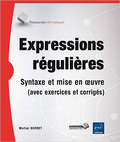Unix |
Unix v6 |
|
 |
graph(6) |
 |
graph draw a graph [ option ] ... | plotter with no
options takes pairs of numbers from the standard input as
abscissas and ordinates of a graph. The graph is written on
the standard output to be piped to the plotter program for a
particular device; see (VI). These plotters exist: for the
GSI and other Diablo terminals; for the Tektronix 4014
terminal; and for the on-line storage scope. The following
options are recognized, each as a separate argument.
a Supply abscissas automatically (they are missing
from the input); spacing is given by the next argument, or
is assumed to be 1 if next argument is not a number. A
second optional argument is the starting point for the
automatic abscissa. c Place character string given by
next argument at each point. d Omit connections
between points. (Disconnect.) gn Grid style:
n=0, no grid n=1, axes only n=2,
complete grid (default). s Save screen, don’t
erase before plotting. x Next 1 (or 2) arguments are
lower (and upper) x limits. y Next 1 (or 2)
arguments are lower (and upper) y limits. h
Next argument is fraction of space for height w Next
argument is fraction of space for width. r Next
argument is fraction of space to move right before plotting.
u Next argument is fraction of space to move up
before plotting. Points are connected by straight line
segments in the order they appear in input. If a specified
lower limit exceeds the upper limit, or if the automatic
increment is negative, the graph is plotted upside down.
Automatic abscissas begin with the lower x limit, or
with 0 if no limit is specified. Grid lines and
automatically determined limits fall on round values,
however roundness may be subverted by giving an
inappropriately rounded lower limit. Plotting symbols
specified by are placed so that a small initial letter, such
as + o x, will fall approximately on the plotting point.
spline (VI), plot (VI) A limit of 1000 points is enforced
silently.
 |
graph(6) |
 |





